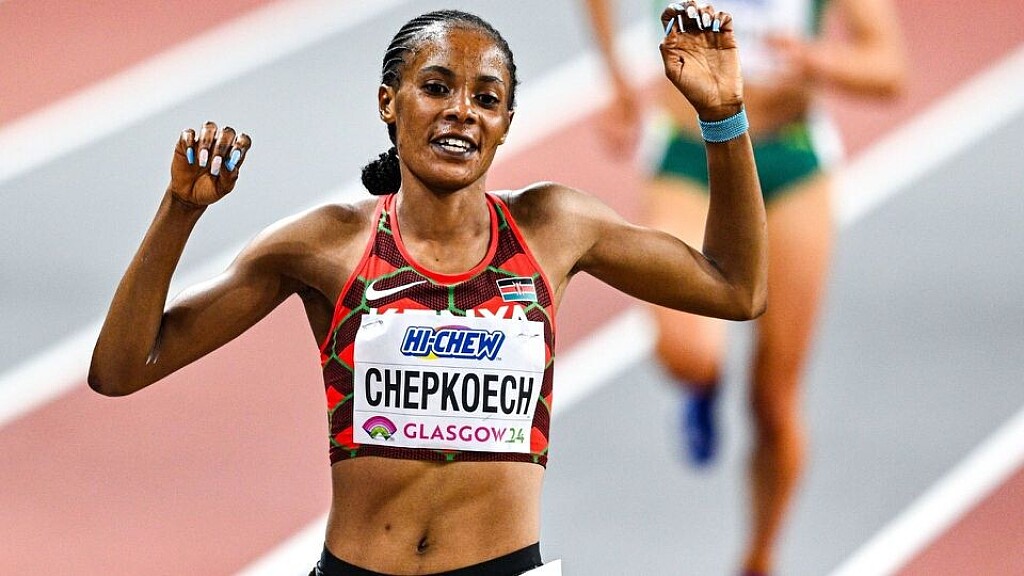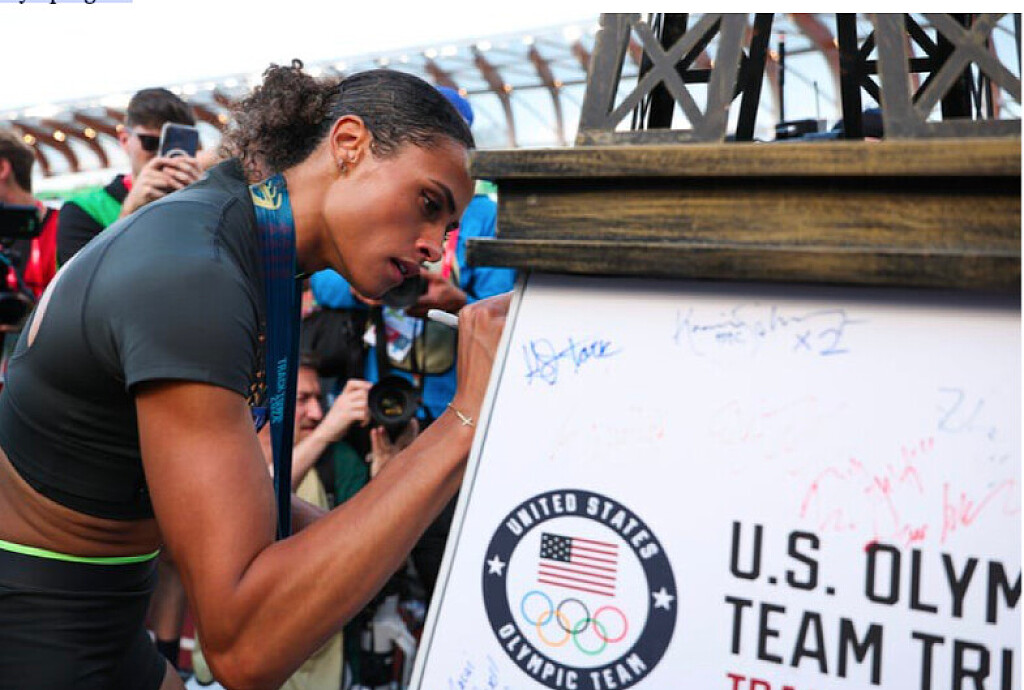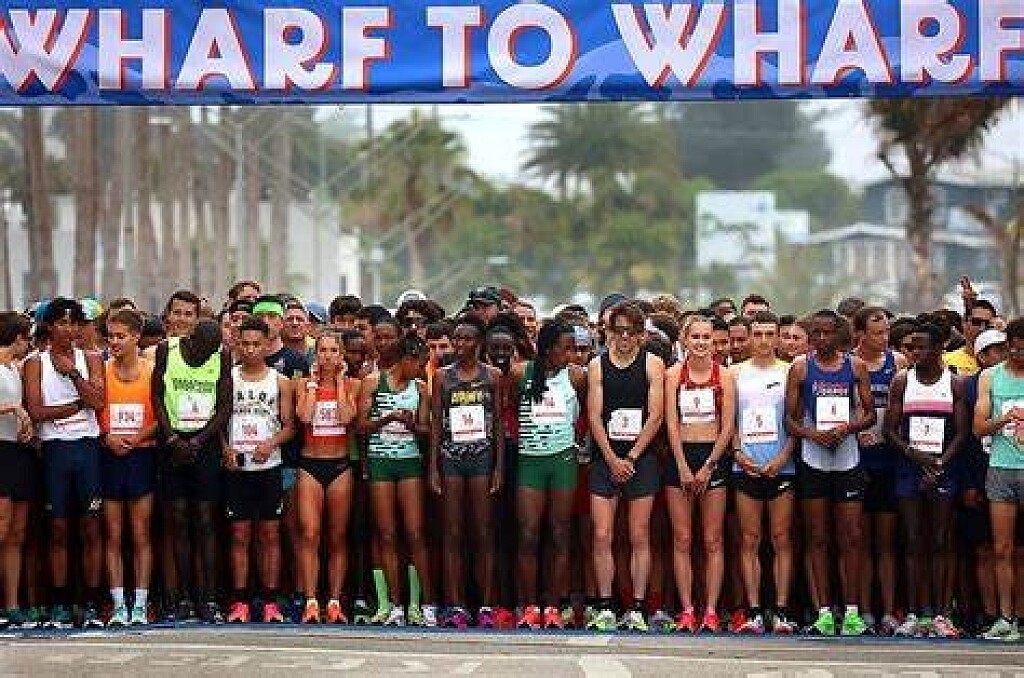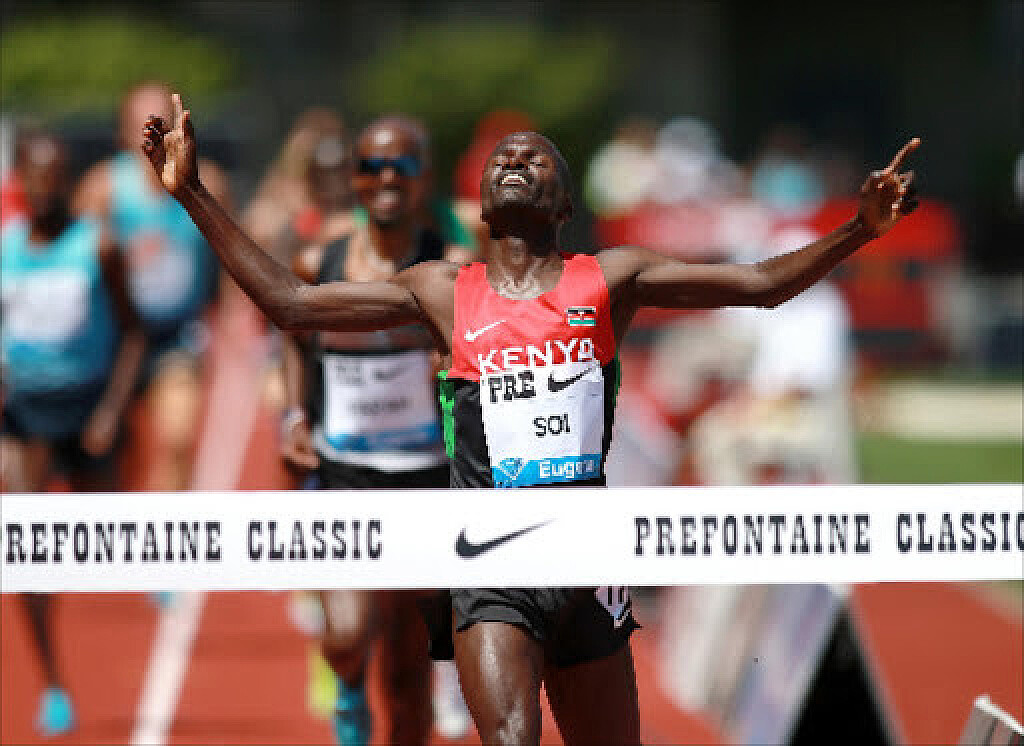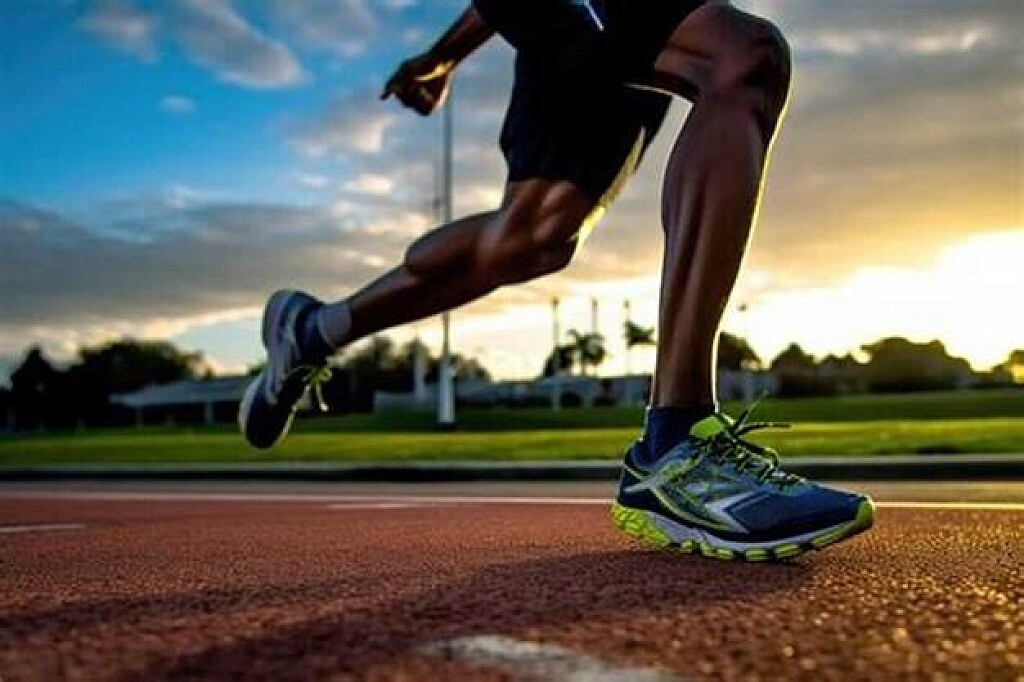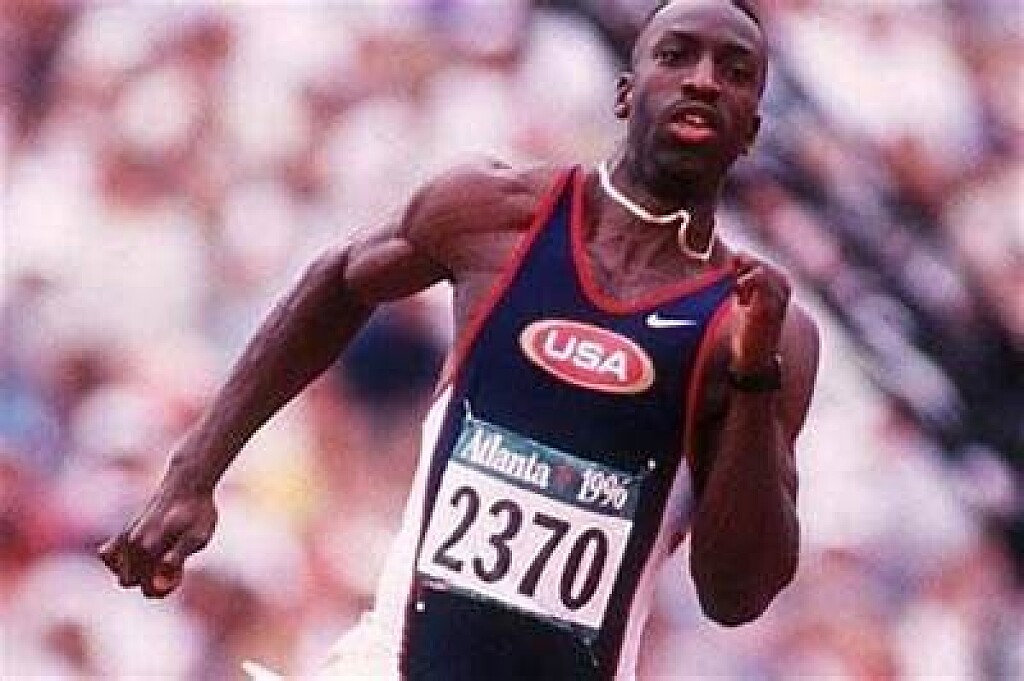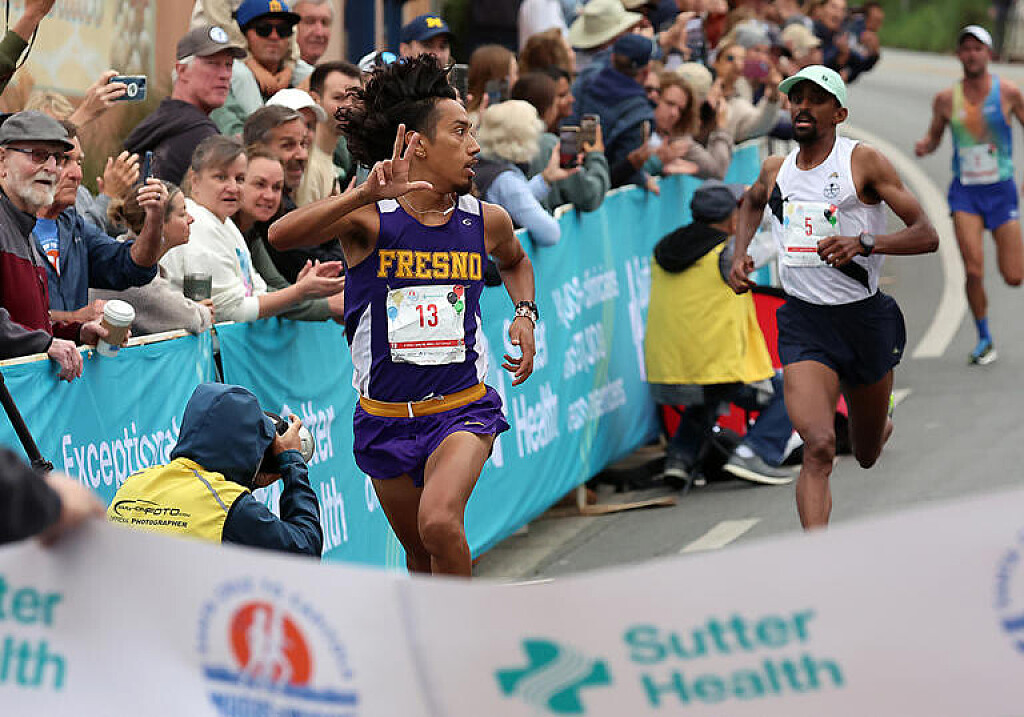Running News Daily
Top Ten Stories of the Week
8/3/2024
These are the top ten stories based on views over the last week.
Chepkoech believes she will be lucky at the Olympics on her third attempt
The third time is the charm. This is what 2019 World 3,000m steeplechase champion Beatrice Chepkoech is banking on as she braces up for a podium finish at the Olympic Games in Paris.
Chepkoech narrowly missed the podium in Rio 2016, finishing fourth (9:16.05) and placed seventh (9:16.33) in Tokyo 2021.
Tokyo saw Uganda's Peruth Chemutai (9:01.45), USA's Courtney Frerichs (9:04.79) and Hyvin Kiyeng (9:05.39) seal the podium while Rio Olympics top spots went to Bahrain’s Ruth Jebet (8:59.72), Kiyeng (9:07.12) and USA's Emma Coburn (9:07.63).

After heartbreaks in Rio and Tokyo, the 33-year-old is laser-focused on clinching the elusive Olympic medal.
“I have missed the podium in my last two Olympic appearances but I am optimistic on my third attempt. I will secure a podium finish,” Chepkoech revealed.
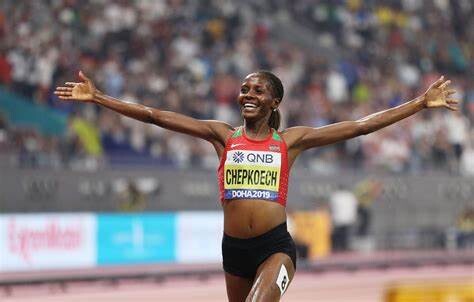
She also highlighted the importance of an Olympic medal to add to her rich trophy cabinet. “It is everybody’s dream to win an Olympic medal. I will be more than happy if I secure a podium in Paris,” she added.
Chepkoech’s impressive resume includes the 2019 world title in Doha, where she set a course record of 8:57.84 while leading Coburn (9:02.35) and Germany’s Gesa Felicitas (9:03.30) to the podium.
She also holds the African title having clocked 9:15.61 in Accra last year with Chemutai (9:16.07) and Ethiopia’s Lomi Muleta (9:26.63) sealing the podium.
Chepkoech is a bronze medallist in the 3,000m at the World Indoor Championships in Glasgow. She finished third in 8:22.68 behind Ethiopia’s Gudaf Tsegay (8:21.13) and USA’s Elle Purrier (8:20.87).
Despite strong competition from World Champion Winfred Yavi and Uganda’s Chemutai at the Paris Olympics, Chepkoech remains unfazed.
“Anything can happen in Paris, I can’t say I fear anyone. I am going to run my race and do my very best,” she stated.
Yavi edged out Chepkoech at the 2023 Championships in Budapest beating her to the title in 8:54.29 with Chepkoech settling for second in 8:58.98 and Faith Cherotich (9:00.69) sealing the podium.
Chemutai beat her to the Prefontaine Classic title on May 25, clocking 8:55.09 with Chepkoech clocking 8:56.51. At the Paris Diamond League earlier this month, Chepkoech finished ninth place in 9:27.21.
Yavi (9:03.68), Alice Finot (9:05.01) and Britain’s Elizabeth Bird (9:09.07) claimed the podium.
Chepkoech has been honing her skills at the Nyayo Stadium, where she has been training three times a week ahead of Paris.
“Training has been intense but rewarding. I do training on Monday, Wednesday and Friday and I have been focusing on my weaknesses to ensure peak form in Paris,” she shared.
In Paris, she will be joined by world U20 champions Jackline Chepkoech (2021) and Faith Cherotich (2022). The duo have been intensifying their training in Eldoret.
Chepkoech highlighted that training alone has been lonely but reiterated her desire to put in more effort.
“The other athletes are training in Eldoret so I am alone. It’s a challenge but I have to do my best to be ready for the Olympics,” Chepkoech stated.
She further highlighted the importance of having her coach along with the assigned coaches from the National Olympics Committee of Kenya.
“Training with my coach has been good because we can strategise on the areas we see weaknesses. It was a good initiative from the federation to have me train with my coach along with the assigned coaches,” she revealed.
(07/26/24) Views: 173Teddy Muley
8 Things You Need to Know About the Paris Olympics—Plus How to Watch
The biggest sport at the Paris Olympic Games will be held on August 1-11. And while it’s the oldest Olympic discipline, a lot will be new about track and field this year.
A lot has changed in the last 100 years. Feathers, jazz, and radios are out. Mom jeans, T-Swift, and TikTok are in.


(We don’t make up the rules.)
Dirt tracks have been replaced by vibrant shades of bouncy mondo. Leather shoes cower next to featherlight carbon-plated spikes. Scouts sprinting along marathons, calling in the action by telephone to announcers projecting the information to spectators sitting in the stands, have been put out of business by helicopters and motorcades livestreaming the race on TV.
But one thing hasn’t changed: the 2024 Olympic Games will be held in Paris, France—where they were held for the last time exactly 100 years ago. And once again, track and field will be the star of the show.
(Sorry, break dancing and skateboarding.)
Here’s what you need to know about track and field, or what the rest of the world calls “athletics,” at the 2024 Paris Olympic Games on August 1-11.
Of the 10,000 athletes from 206 nations competing in 329 events at the Paris Olympic Games, 1,800 of them will be in the 48 events of track and field. That makes track and field by the numbers the biggest of the 32 sports.
It’s a fitting designation for a historic sport that traces its roots back to about 200 B.C. in Ancient Greece and the birth of the Olympics. Then, men (yes, just men) competed in sprints, the long jump, discus, and javelin to celebrate human potential and to honor the gods.
Those events are all still contended today (plus a whole lot more that would make the Ancient Greeks—and many of our contemporaries, for that matter—scratch their heads, like the 3,000-meter steeplechase and the 20K racewalk), giving special import to this sporting discipline.
In addition: unlike say, soccer or basketball, which have the Football World Cup and the NBA Finals, the Olympics represents the pinnacle of the sport for track and field. For all the disciplines within track and field, from the 100 meters, to hammer throw, to the decathlon, there is no higher honor than winning Olympic gold.
It’s been a long, arduous road since Pierre de Coubertin, founder of the modern Olympic Games in 1896, famously said that the point of the Olympics was “the solemn and periodic exaltation of male athleticism…with the applause of women as reward.”
At the 1900 Olympics, also in Paris, 22 women defied Coubertin’s dream and competed in a total of five events: croquet, equestrian, golf, sailing, and tennis. They made up a minuscule 2.2 percent of the 997-person field. This year, thanks to tireless work starting with the International Olympic Committee, the Paris Olympics will be the first to (basically) achieve gender parity.
Of the 329 medal events, 157 will be contested among men, five more than the 152 for women. (There are also 20 mixed-gender events, including the mixed-gender 4×400-meter relay on the track and the mixed-gender marathon race walk relay.) But within the 32 sports, 28 are gender equal—including, for the first time, track and field.
The devil is in the details, and if we’re putting true parity paramount then there’s still some work to go. Even within track and field, the men still compete in the decathlon (10 events) while the women compete in the heptathlon (seven). And then there’s everyone on the team beyond the athletes themselves: in Tokyo three years ago, 13 percent of coaches were women—and that’s up from 11 percent in Rio in 2016. A quarter of National Olympic Committees give less prize money to women gold medalists than men.
Speaking of prize money, track and field is breaking barriers this Olympics by becoming the first sport to give out prize money. Gold medalists in both women’s and men’s races will win $50,000, with relay teams splitting that pot four ways. In total, that’s $2.4 million that World Athletics will be coughing up to foot the bill, a sign of change for how the Olympics have bloomed from an exhibit of amateurism to full-blown commercialization.
Notably, this prize money is less than World Athletics hands out at the World Athletics Championships, which awarded gold medalists $70,000 in Budapest last summer. World Athletics intends to extend prize money to silver and bronze medalists at the 2028 Olympic Games in Los Angeles.
That prize money from World Athletics remains separate from prize money awarded by some national federations—including the U.S. Olympic and Paralympic Committee, which will award $37,500, $22,500, and $15,000 to Team USA gold, silver, and bronze medalists, respectively, in Paris.
Paris vowed to make this Olympics the greenest ever, building as little new infrastructure as possible and using the city’s iconic landmarks as venue backdrops instead. Rather than build dazzling new stadiums which quickly fall into disuse and disrepair after the Games—as we’ve seen at previous Olympics—Paris opted to revamp existing infrastructure, some of it dating back to the last Olympic Games here in 1924.
The Stade de Yves-du-Manoir, the main stadium of the 1924 games which hosted among other things track and field, has a new 1,000-seat grandstand and will host the field hockey events.
The pastel-colored high-rise apartments of the Olympic Village, where many athletes stay during the Games, add a splash of color to Seine-Saint-Denis, the poorest area not only in Paris, but the country. Water pumped from deep below the earth cool the apartments made from a mix of wood and concrete (although many delegations have requested AC units nonetheless) and the avenues outside are made from a permeable pavement composed of crushed seashells that cool the streets by allowing water stored underneath the ground to evaporate on hot days.
This initiative has also fast-tracked cleaning up the famously romantic and infamously gray city. Paris has built 250 new miles of bike lanes, continued to expand its Metro network, allegedly cleaned up the Seine, and planted 300,000 new trees.
Track and field will be held on France’s biggest stage, quite literally. Built for the 1998 Football World Cup, Stade de France seats more than 80,000, making it the largest stadium in France. It’s home to the French national football (soccer) and rugby teams as well as the country’s biggest concerts.
As you’ve probably seen by now, the track has been resurfaced to purple for the Games. The shade is reminiscent of lavender, a homage to both the creativity of the 2024 Olympics and to the ash-colored track at the 1924 Olympic Games across the city.
If you’ve watched track and field meets in the past, you may have been confused why some athletes names’ appear with a big “Q” or a little “q” on the scoreboard after the preliminary and semi-final rounds.
If that’s you, don’t stress. In the spirit of second chances, and well, simplicity, the Paris Games are doing away with this system (for the most part).
For the first time ever, individual track events ranging from the 200 meters to the 1500 meters (including hurdles races) will include a “repechage” round. Athletes in the preliminary round who do not automatically qualify for the semi-final will have an opportunity to race their way into the next round through this additional heat, the entomology of which comes from repêchage, or “second chance” in French.
Under this new format, events will have four rounds: preliminary, repechage, semi-final, and final. This guarantees that every athlete competing in the 100 through the 1500 will have the opportunity to race twice. The number of athletes who will advance out of the repechage to the semi-final varies depending on the event.
The repechage round replaces the former system, in which athletes advanced by running the fastest in their heats (Q), plus the next best getting in on time (q).
The 100 meters already has an additional round of preliminary heats, and the distance events (3,000-meter steeplechase, 5,000, and 10,000) require adequate time to recover, so these events will be conducted without the repechage round.
Expanding on the theme of gender equality at the Paris Olympics, the marathon route pays homage to a pivotal moment in women’s history during the French Revolution: the Women’s March on Versailles. The roughly 160 competitors in the men’s and women’s races (as well as the citizen’s race, Paris 2024 Marathon Pour Tous) will follow in the footsteps of roughly 7,000 Parisian women and men who marched from Paris to Versailles on October 5-6, 1789 to demand bread and arms. (It worked: King Louis XVI finally agreed to sign the Universal Declaration of the Rights of Man and Citizens that day.)
Just like those disgruntled Parisians 235 years ago, runners will start at Hôtel de Ville, the city hall in the center of Paris, and will make their way on foot to the Palace of Versailles about 12 miles to the west. Along the way, runners will pass through nine districts of the Île-de-France, against a backdrop of the City of Light’s most iconic landmarks, parks, and forests, including the Place de Concorde, Rue de Rivoli, Tuileries Garden, and, of course, the Louvre.
In addition to being steeped in history and splendor, the course will be particularly grueling for a road race: the middle section packs some kickers that add up to over 1,430 feet of climbing and descent, with a maximum grade of 13.5 percent. Throw in some heat and humidity and we’re in for two unpredictable, action-packed events.
You may be wondering why race walking, in which competitors basically try and cheat as much as possible without getting caught, is an Olympic discipline. We are, too. Just watching race walkers swing those hips along at 6-minute per mile paces seems injury-inducing. But hey, three-on-three basketball, badminton, and trampoline are in the Olympics, too, so who are we to judge.
But judging is in fact a critical component of sport. Race walking rules stipulate that competitors must keep one foot on the ground at all times, to the point where any loss of contact is not visible with the naked eye. In other words, the rules are basically begging athletes to cheat and run without getting away with it. In addition, the lead leg must remain straight until that leg passes under the body. Using just the naked eye, that is, no technology whatsoever, judges monitor competitors to try and uphold these regulations.
For the first time since the discipline became an Olympic event in 2000, race walking will provide gender-equal medal opportunities. There will be a men’s and women’s 20K race, as well as a marathon-distance mixed-gender relay, which will replace the men’s 50K.
In a highly unique format, the mixed-gender relay will see 25 teams of one man and one woman each. They’ll complete a marathon-distance race broken up into four 10K chunks, with each competitor racing twice (man, woman, man, woman).
Perhaps the greatest improvement from the 1924 Olympic Games is that we can watch it all without even being there. NBC Universal, the American multinational mass media and entertainment conglomerate that owns the media rights to the Olympics, is planning to air more than 7,000 hours of total coverage of the Paris Olympic Games. Track and field coverage will be broadcast on the NBC, USA, and E! TV networks and streamed on Peacock, NBCOlympics.com, NBC.com, NBC app, NBC Olympics app, and NBC Sports app.
The action kicks off with the men’s and women’s 20K race walk on August 1, and concludes with the women’s marathon on August 11. In between, enjoy a nine-day action-packed feast on the track at Stade de France. Find the full track and field schedule of events here and the full track and field viewing schedule here.
Morning viewing sessions on August 2-9 will commence at 4 A.M. ET, and medal events will be shown on NBC’s tape-delayed prime time broadcast. Don’t worry, you can watch them live, too! Peacock, the streaming service of the Olympics, will stream every sport and event.
Those willing to sacrifice some sleep can catch the men’s marathon coverage live beginning at 2 A.M. on August 10 on USA Network, Peacock, and the NBC Sports app, while the women’s marathon will be shown live beginning at 2 A.M. on August 11.
(07/27/24) Views: 163Outside Online
Even in an Olympics year, elite fields are deep for Wharf to Wharf road race Sunday
The 52nd Wharf to Wharf race takes place Sunday, and 16,000 runners will make the annual 6-mile trek from Santa Cruz to Capitola. This time, they'll do so in an Olympic year.
Supportive fans who position themselves along the course route will not only be treated to an up-close view of a blazing quick elite field, and plenty of recreational runners, some of them costumed, they'll also get to take in the traditional array of musical groups that line the course.
Some of the world's best middle distance and distance runners are in Paris for the 2024 Summer Games, but Dayne Gradone, the Wharf to Wharf's elite athlete coordinator, believes the celebrated local race drew a heck of a field.
"On the whole, the fields are solid," said Gradone, of the elite entries for men and women. "There may be less pop at the front, but they're deep fields."
There are plenty of registered athletes whose résumés include 28-minute finishes in the 10K and 13:20 marks in the 5K.
One of the top runners in the field is Peter Njeru. Earlier in the year he clocked a 27:52 10k. He was just a 34 minute 10k runner before he joined the KATA (Kenyan Athletics Training Academy in Thika) training camp in 2020. Second photo is Peter having lunch with KATA's founder/director Bob Anderson going on his plans for the Race. Bob recently opened his second KATA location in Portugal.

As usual, runners will have plenty of incentive to finish in the top four. The top male and female finishers will each receive $4,000. Second pays $3,000, third garners $2,000, and fourth pays $1,000. The top American runner will also receive $1,000.
The women's field is headlined by Dom Scott and Atsede Baysa.
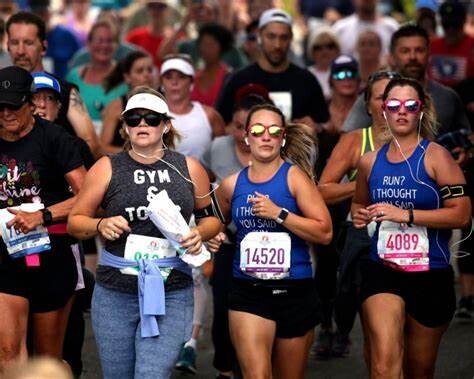
Scott is a two-time Olympian, five-time NCAA champion and two-time national champ. She has dual citizenship (South Africa and U.S.) and is eligible for the top American runner prize.
Ethiopia's Baysa has won three major marathons, claiming the Boston title in 2016, and Chicago title in 2010 and '12.
"The women's field is incredibly deep," Gradone said. "A lot of women have run in the low 15 minutes in the 5K. Those are some serious times."
Gradone is alluding to talents like Bahrain's Bontu Edao Rebitu, and Americans Kayley Delay, Katie Izzo, Grace Barnett, and Paige Wood. Australia's Clare O'Brien isn't far off, and Great Britain's Alice Wright could also be in the mix.
American Everlyn Kemboi, the 2023 NCAA champ in the 10K, was added to the field this week.
Top female locals include Santa Cruz's Amy Schnittger, an Aptos High and Chico State University alumna, and Mari Friedman, a Santa Cruz High and Oregon State University alumna.
Kenya's Shadrack Keter, the third place finisher at the Wharf to Wharf last year, is one of the favorites in the men's field, as are New Zealand's Matt Baxter, a two-time national champion, Kenya's Peter Mwaniki Njeru, Ethiopia's Ali Abdilmana, and Zimbabwe's Bradely Makuvire.
A strong American contingent includes Reid Buchanan, a silver medalist in the 10,000 at the 2019 Pan American Games, Noah Droddy, Sidney Gidabuday, Aidan Reed, Patrick Smyth, Zac Hine and Evert Silva.
Top local males include St. Francis High alum Julian Vargas, who took fifth at the 2024 3C2A State Championships in the 10,000 for Hartnell College, and Aptos native Jack Rose, who took 54th out of 26,469 runners at the 128th Boston Marathon in April.
Vargas (29:28) took ninth at the 2023 Wharf to Wharf and Rose (30:49) took 33rd.
(07/27/24) Views: 163Jim Seimas
Are You Drinking Water Wrong? According to Researchers, You Probably Are
Here’s how to hydrate for better performance.Here’s how to hydrate for better performance.Staying hydrated seems simple enough—drink water when you’re thirsty and stop when you feel like you’re done, right? Well, it’s a bit more complicated than that, especially for runners.
That’s because not understanding the complicated equation of race distance and intensity combined with water and electrolyte intake can ruin a long run or race, not to mention have serious health repercussions. Drink too little and your ability to power through your workout suffers; drink too much and you can get sidelined by nausea and frequent pee breaks.
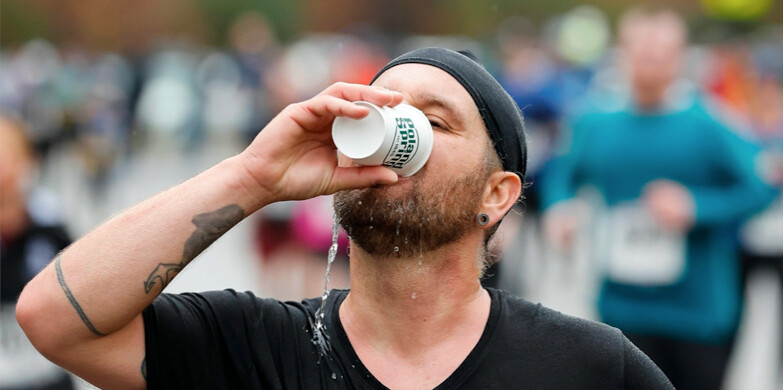
And even though you might first worry about dehydration for those summer runs, researchers found that the newer you are to running and the slower you run, the more likely it is that you will drink too much water while racing. (We’ll talk more about this later.)
To that end, much of the research demonstrates that mastering the art of hydration when you run isn’t as simple as it seems. Keep reading to find out if you drink water the wrong way—and how to drink water right.
6 Ways You Drink Water Wrong and 6 Ways to Drink Water Right
❌ Wrong Way: Gulping water during a race
✅ Right Way: Sip as you run
It’s okay to slow a little to make sure you’re getting in your fluids during a race, but gulping water at each aid station can ultimately slow you down and also lead to an upset stomach.
That’s because drinking too much water too quickly overloads the stomach, causing it to rapidly stretch. This can lead to discomfort and potential nausea, Justin Mullner, M.D., a board-certified primary care sports physician with the Orlando Health Jewett Orthopedic Institute in Florida tells Runner’s World.
Take small sips of water (or electrolyte drink) every 15 to 20 minutes, depending on the temperature and intensity of the run.
Combining a run with too much water is even more likely to cause nausea. That’s because intense exercise directs blood flow away from the stomach and toward the muscles, causing digestion to slow down. “So you put a bunch of water in there and the stomach really can’t handle it effectively and efficiently,” Mullner says.
A better strategy is to take small sips of water (or electrolyte drink) every 15 to 20 minutes, depending on the temperature and intensity of the run. “This approach helps maintain a steady level of hydration and prevents the stomach from becoming overly full,” Meghan Kennihan, a RRCA- and USATF-certified running coach, tells Runner’s World.
❌ Wrong Way: Drinking from a dirty water bottle✅ Right Way: Regularly clean your bottle
Your trusty water bottle is always there when you need it. Sadly, constant use means you’re probably getting more than water. Unless you regularly clean your water bottle—which means daily according to Mullner—you could be getting a dose of bacteria or even mold.
Every time you put your mouth to the water bottle and use your hands to open and close it, you transfer bacteria that can make its way inside. The moist environment inside your water bottle provides an optimal breeding ground for bacteria and mold, especially if you live in hot, humid areas. If left unchecked, the bacteria and mold can continue growing, potentially causing you to experience symptoms similar to food poisoning (such as stomach pain or cramps, diarrhea, and vomiting), per the Centers for Disease Control and Prevention. People with mold sensitivities can have a flare-up of allergy symptoms.Ideally, you’d wash out your reusable bottle—whether plastic, stainless steel, or glass—with soap and warm water each time, Mullner says. “It’s even more important if you’re using the bottle every single day or drinking beverages other than water,” he says. Mixing electrolyte powders or adding a sports drink to your bottle, for example, means more material for bacteria.Signs your bottle could use a good scrubbing include visible residue, a funny or foul odor, or changes in how things taste, Mullner says.
❌ Wrong Way: Waiting too long to hydrate before a run or race✅ Right Way: Start early
When preparing for a long run or race, many runners forget to hydrate until they’re practically toeing the starting line, “which is a bad idea because it doesn’t give the body enough time to absorb and utilize the fluids,” Kennihan says.
Staying well-hydrated in the days leading up to your long run or race can help you perform well, avoid feeling overly full, and reduce restroom stops. Be especially diligent about drinking water starting the day before a long run or race, and check your urine color to be sure you’re getting enough. “Really dark yellow is a sign that you’re not well-hydrated,” Mullner says. “Ideally, it has a slight tinge of yellow.”
Drink 16 to 20 ounces of water about 2 to 3 hours beforehand and then another 8 to 10 ounces 20 to 30 minutes before running.
Individual fluid needs vary. However, a general guideline for the day of the event is to drink 16 to 20 ounces of water about 2 to 3 hours beforehand and then another 8 to 10 ounces 20 to 30 minutes before running, Kennihan says. You may need to adjust your intake according to your body size, run distance, and outside temperature.
❌ Wrong Way: Drinking too much water on long runs✅ Right Way: Balance electrolyte intake with water
It’s critical to drink enough water during long training runs and races. However, drinking lots of water, and only water, can lead to overhydration, meaning you have too much water in your body.
Hyponatremia is an extreme version of overhydration, and occurs when sodium levels in the blood are lower than recommended, leading to muscle cramps, headaches, nausea and vomiting, low energy, and confusion, per the Cleveland Clinic. Normally, your body keeps your electrolytes in balance by taking the minerals from the foods you eat and filtering the excess through your urine. However, intense exercise causes electrolytes (particularly sodium) to be quickly lost through sweat, and hot, humid temperatures only accelerate this loss, per the American College of Sports Medicine.
It's not just new runners who tend to overhydrate. At the other end of the spectrum, 41 out of 63 finishers at an ultramarathon also finished with mild or severe hyponatremia, according to a 2019 Frontiers in Nutrition study.
Take in electrolytes in addition to water if you’re running for longer than 60 minutes or in hot, humid temperatures. Drinking water without replacing electrolytes dilutes the remaining electrolytes (again, sodium in particular) in your blood. “You can potentially get yourself into trouble with hyponatremia,” Mullner says.
To prevent an electrolyte imbalance, take in electrolytes in addition to water if you’re running for longer than 60 minutes or in hot, humid temperatures. Bring an electrolyte drink, some gels, or another electrolyte supplement.
❌ Wrong Way: Drinking a pure sports drink✅ Right Way: Water it down
Sports drinks offer a convenient delivery system for carbs and electrolytes while running. Still, many runners prefer to water things down.
“Many sports drinks are too concentrated, leading to stomach cramps and nausea. Diluting them can still provide the necessary electrolytes and carbohydrates without overwhelming the stomach,” Kennihan notes.
The optimal ratio of sports drink to water depends on your preferences and the makeup of your drink. Mullner suggests diluting your sports drink to the point where it’s most palatable for you.
Diluting sports drinks can still provide the necessary electrolytes and carbohydrates without overwhelming the stomach.
The exception: Don’t dilute a sports drink that contains carbohydrates if you’re using it for energy purposes. “Some sports drinks have carbs in there to help extend the amount of time you can perform, and if you’re trying to absorb carbs better, you would have it with some electrolytes,” Mullner says. Adding water can cut down on how many carbs you get per sip, limiting performance benefits.❌ Wrong Way: You don‘t know about your med’s side effects
✅ Right Way: You read labels and talk to your pharmacist
Some over-the-counter and prescription medications can affect an athlete’s hydration, says Kennihan. NSAIDs, such as ibuprofen and aspirin, can reduce blood flow to the kidneys, which can impair their ability to conserve water and electrolytes, potentially leading to dehydration, especially during prolonged physical activity like running.
Similarly, diuretics, which are prescribed for conditions such as hypertension and edema, increase urine production and promote the excretion of water and electrolytes from the body. Increased urine output can lead to a significant loss of fluids and electrolytes, making it easier for runners to become dehydrated, particularly in hot and humid conditions or during long-distance runs.
Likewise, antihistamines can reduce saliva production and increase the risk of dry mouth and dehydration, while laxatives can cause increased bowel movements and fluid loss.Lastly, stimulant medications, such as those used for attention deficit hyperactivity disorder (ADHD), can increase sweating and fluid loss, potentially leading to dehydration if fluid intake is not adequately maintained.
Bottom line: As a runner, remember that hydration is as much a part of your performance as actual time on your feet.
The authors of a 2019 article published in the International Journal of Sport Nutrition and Exercise Metabolism recommended that runners develop a “personalized and practiced race plan” to optimize their fluid and carbohydrate intake based not only on their distance and intensity, but also taking into account their body composition, as well as the weather and other race conditions, such as refueling stations, at each event.
(07/28/24) Views: 147Soi eyes Bogota Half Marathon course record on Sunday
The 2008 Olympic 5,000m bronze medalist Edwin Soi will on Sunday attempt Geoffrey Mutai's Bogota Half Marathon 1:02:20 course record.
Mutai, a two-time New York Marathon champion set the time at the 2011 edition followed by Ethiopia’s Deriba Mergat (1:04:49) and Wilson Chebet (1:04:57).
Soi believes the competitive field and favorable weather conditions make the record within reach.
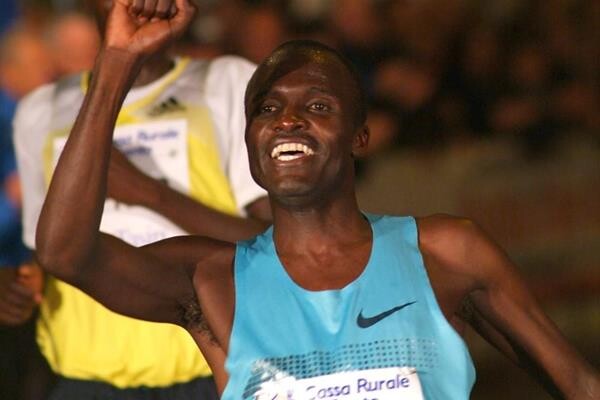
“I believe the competitive field assembled this year and favorable weather make it possible to go for the record,” Soi remarked.
He will be joined by compatriots Philemon Kiplimo, the 2022 Prague Half Marathon champion, Cali 10km Road race champion Ezra Tanui and Yangzhou Half Marathon champion Edward Koonyo.
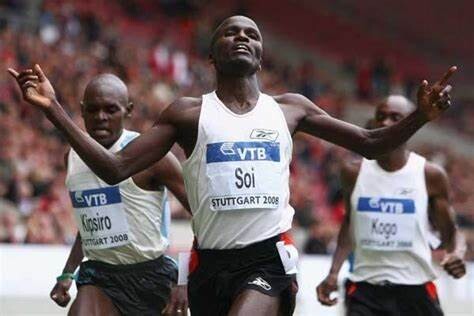
The Kenyans will face stiff competition from Venice Marathon champion Solomon Mutai of Uganda, 2023 Belgrade Marathon champion Chakib Lachgar of Spain and 2022 Hannover Marathon champion Hendrik Pfeiffer of Germany.
“I did not do so well in the race last year. With my preparations this year, I am confident about running well and achieving my target,” added Soi.
He clocked 1:04:55 for third place, trailing Tanui (1:04:50) and Morocco’s Omar Chitachen (1:03:50).
“I have run here three times, winning once. I want to add another win this year,” he revealed.
Soi claimed his first title in 2022 in 1:05:27, ahead of Uganda’s Andrew Kwemoi (1:05:29) and Daniel Muindi (1:06:45).
Napoli City Half Marathon champion Angela Tanui will seek to reclaim her crown in the women's edition.
“I was not 100 per cent ready last year. My preparations before the race were not good either,” Tanui noted.
Tanui placed fifth in 1:16:31 in a race she was bested by Daisy Kimeli (1:15:12), Ethiopia’s Anchialem Haymanot (1:15:34) and Colombia’s Angie Orjuela (1:15:40).
She won the title in 2022 in 1:13:29 with Veronicah Wanjiru (1:15:26) and Ecuador’s Rosa Chacha (1:16:43) trailing.
“I am ready this year. My preparations have been good,” she said.
Tanui will face defending champion Kimeli and the Ethiopian duo of Aberu Ayana, the Lisbon Marathon champion, and Frankfurt Marathon champion Buzunesh Getachew.
(07/27/24) Views: 143Teddy Muley
Try this cutdown workout to conquer your 10K goals
If you’re aiming to elevate your 10K performance and smash your race-day goals, we have the perfect workout to help you get there. The cutdown workout is a powerful training method that ramps up intensity progressively throughout your run, pushing your limits and enhancing your performance. It’s designed to build stamina, improve speed and tackle those race-day challenges head-on.
This workout involves starting at a slower, manageable pace and gradually speeding up throughout the session. By doing so, you improve your endurance and ability to sustain a faster pace as fatigue sets in, crucial for excelling in longer races like the 10K.
The effectiveness of a cutdown workout lies in its ability to simulate race conditions and build both physical and mental stamina. As you progress, you practice maintaining focus and managing effort while pushing closer to your limits. This gradual escalation teaches your body to adapt to increasing demands, enhancing your overall speed, aerobic capacity and race-day performance.
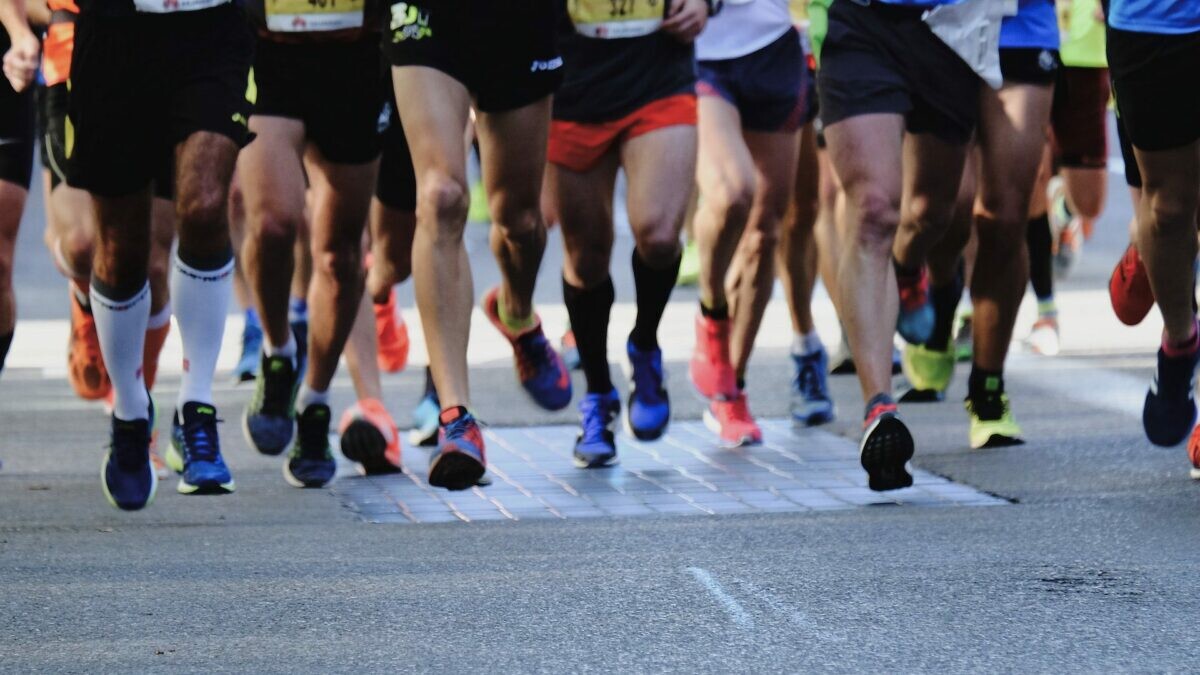
10K cutdown session
While it’s helpful to do this workout on a track for exact measurements, you can also do it on the road using your watch, and can even approximate your distances. Following your warmup, run each interval one after another without any rest in between.
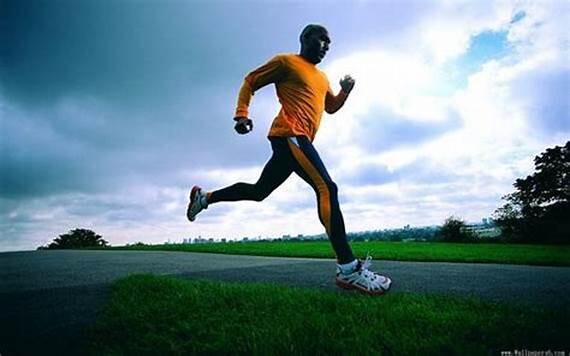
Warm up with 10-15 minutes of very easy running, followed by 5 minutes of dynamic stretches (leg swings, high knees).
Run 3 km at an easy pace (60-65 per cent of maximum effort); pick it up with 1.5 km at a moderate pace (70-75 per cent of maximum effort).
Continue with 800 meters at a fast pace (80-85 per cent of maximum effort), and finish with 400 meters at a very fast pace (90 per cent+ of maximum effort).
Cool down with 10 minutes of very easy running.
Make sure to follow any speedwork session like this one with a rest day or a day of very easy running.
(07/27/24) Views: 133Keeley Milne
Sprint to success with these tips from a pro
Four-time Olympic gold medalist Michael Johnson wants you to pick up the pace.
With the Paris Olympics well under way, running enthusiasts and athletes alike are looking for ways to elevate their game. Here to help is Michael Johnson, one of the most decorated sprinters of all time. As reported in Men’s Health, Johnson, a four-time Olympic gold medalist and eight-time world champion, offers his expert insights into running a fast 400m and preparing for an all-out sprint. His tips cater to the unique needs of every athlete, helping you tailor his advice to your own training.
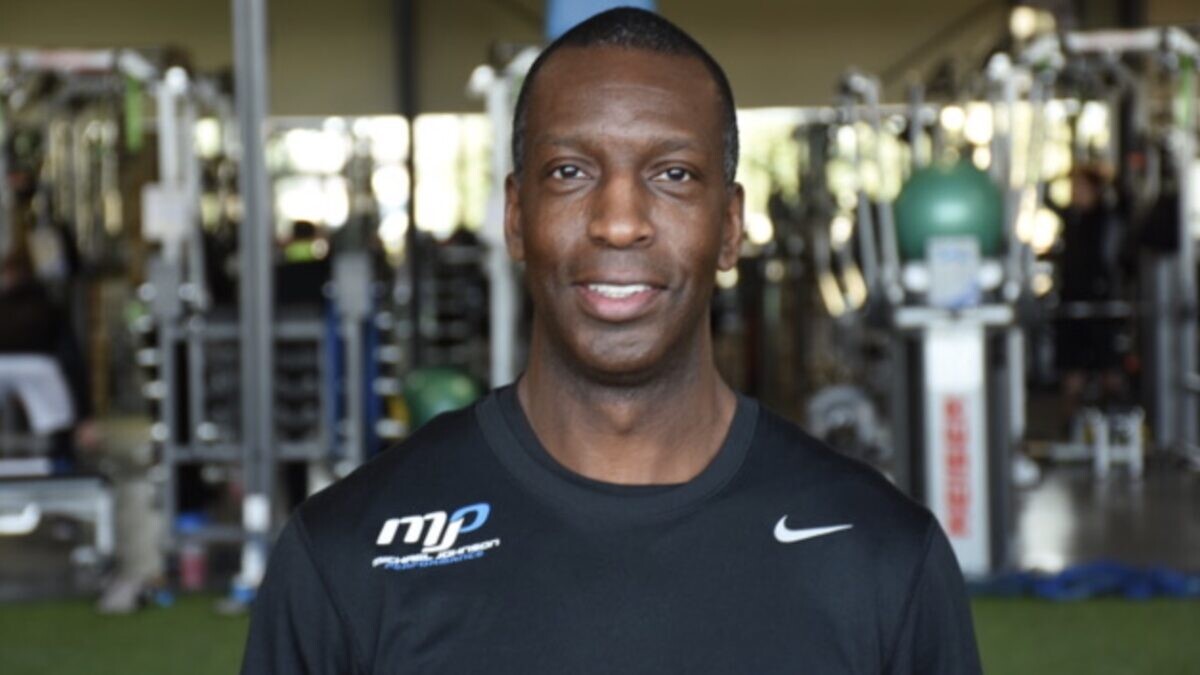
Short, fast training is for everyone
If you’re used to moderate-pace runs, incorporating sprints can be a game-changer. “The more you sprint and become accustomed to sprinting, your body becomes more powerful and stronger,” says Johnson. This power not only reduces the risk of injury in less strenuous runs but also improves your overall running technique, making you faster and more efficient.
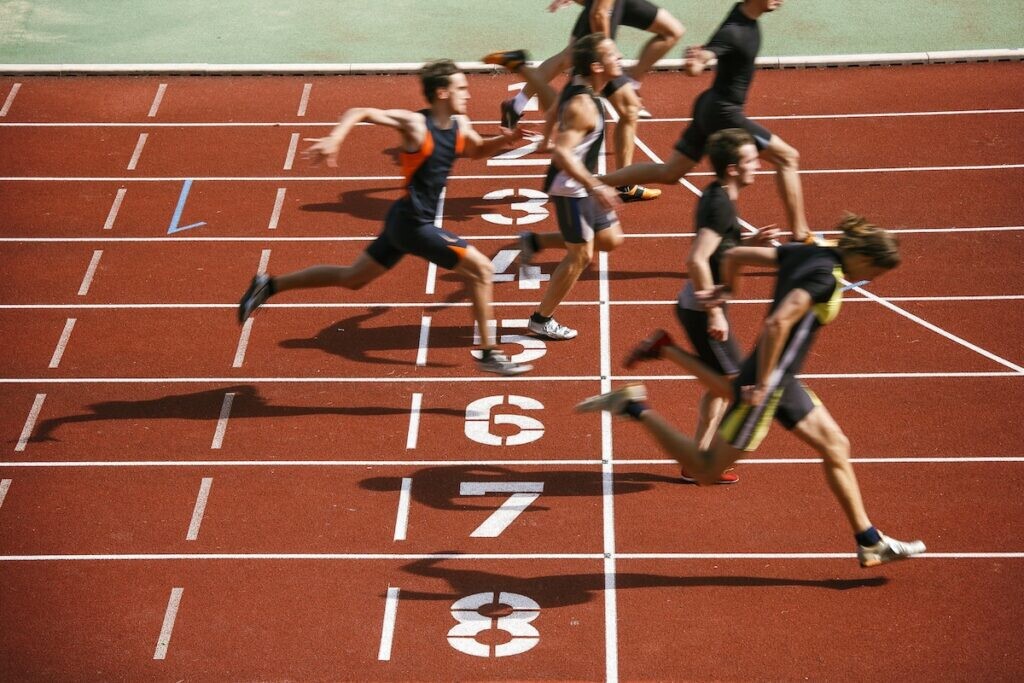
Tackling the 400m dash
Ready to hit the track? Johnson emphasizes the importance of easing into your sprint training. “Keep the volume of your sprinting light to start, allowing your body to progressively adapt,” he advises. Consistency is key—incorporating sprint work into your routine regularly is crucial. “You’re at higher risk of injury if you’re not sprinting often enough,” says Johnson, adding that sprint training should make up around 10 percent of your weekly workouts initially.
Good form is key
In sprinting, form is everything. Johnson stresses the importance of symmetry and efficiency in your movements. “If you go into a sprint session with poor form, it’s catastrophic,” he warns. Ensuring that your arm swing, stride and overall body positioning are balanced and efficient can make a significant difference in your performance.
Work on sustained speed
“The primary thing you’re training for as a 400-meter sprinter is sustaining speed for the longest period that you possibly can,” explains Johnson. This involves practicing running at a pace you can maintain throughout the race, rather than going all-out from the start. Johnson suggests a practice workout that involves running four rounds of 300 meres at 70 to 80 per cent of your max speed, with one-minute rests between rounds. This type of training builds the stamina needed to handle the final push during a race.
Race day tips
On race day, conserve your energy wisely. “The critical component to the 400-meter run is understanding that it’s an exercise in managing energy and speed around the entire sprint,” says Johnson. Focus on your mental game, as the ability to make quick, real-time decisions is essential for a successful race. You’ll be well on your way to smashing your 400-meter goals and elevation your overall running game.
(07/29/24) Views: 133Keeley Milne
Bix 7 Notebook: Samuelson, Keflezighi collect more Bix hardware
The four legendary runners who appeared at various Quad-City Times Bix 7 events this week all made it through the grand 50th-anniversary race just fine.
In fact, two of them came away with awards.
Joan Samuelson, who has won four Bix 7 women’s championships and 15 masters titles, was the winner of the women’s 65-69 age group and she did it in record time — 50 minutes, 47 seconds. She now holds the women’s course record in four age groups — 50-54, 55-59, 60-64 and 65-69.
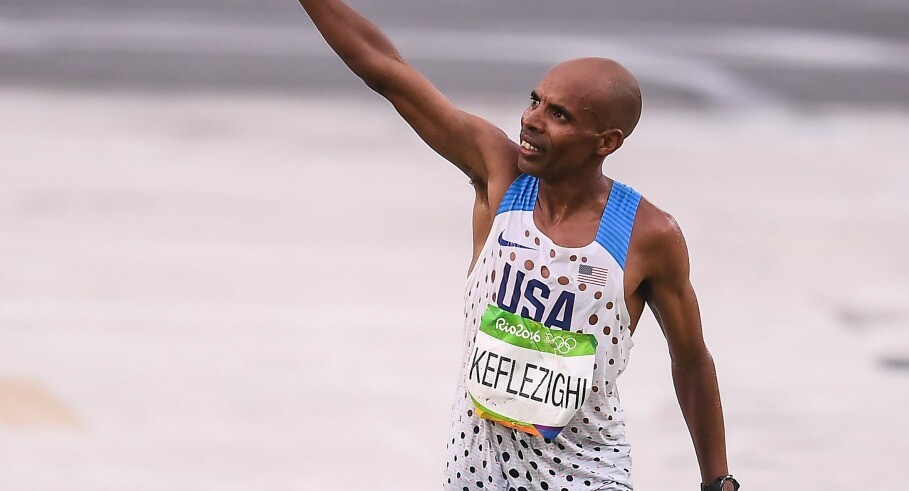
Meanwhile, two-time Bix 7 champion Meb Keflezighi added the men’s 45-49 age group championship to his resume on Saturday.
Keflezighi said he wasn’t really sure he was going to push himself in the race, but with the crowd cheering and urging him on, he couldn’t help himself. He covered the course in 41:37.
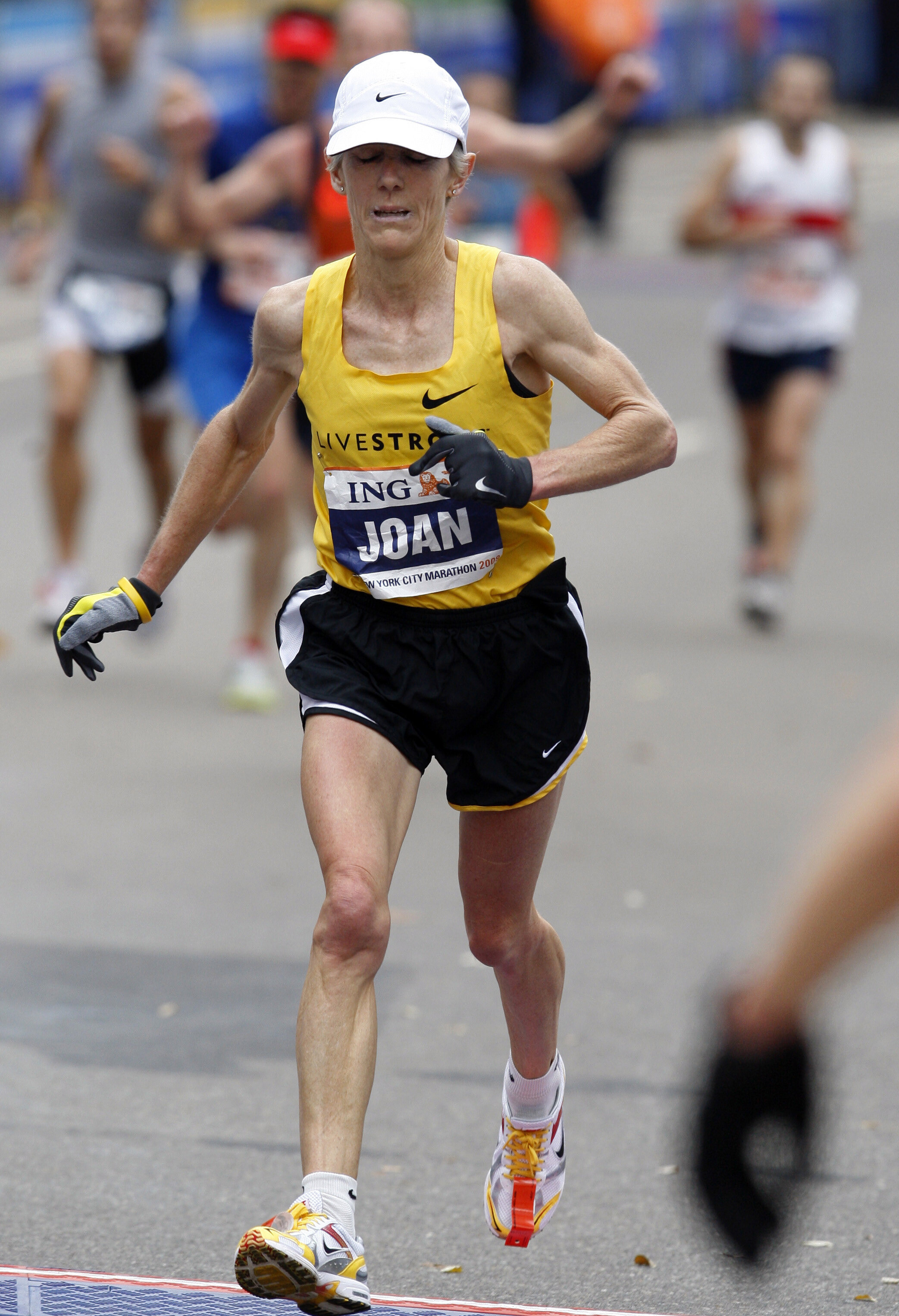
At one point, Keflezighi encountered a man who told him he’d had dreams of running the race with him.
“Then he took off, but I caught up with him and said ‘Let’s make your dreams come true,’’’ Keflezighi said.
Bill Rodgers, who won the Bix in 1980 and 1981 and has run it every year since, finished Saturday's run in a time of 1:19:46.
Two-time Olympic medalist Frank Shorter, who like Rodgers is 76, did the two-mile Quick Bix. But he said he still had a great time, marveling at how many times little kids breezed past him along the way.
At one point, a mother with a small daughter who Shorter estimated to be 5 or 6, came up alongside him. The mom told the girl to just go ahead and take off if she wanted. She’d see her at the finish line. The girl turned on the jets and took off.
“You could almost see the vapor trail,’’ Shorter joked.
Age-group records: Samuelson wasn’t the only person to set a course record for their age group.
It also was accomplished by Lucas Hollingshead of Elkhart, Ind., in the men’s 15-under division (37:41) and Richard Kutzner of Clear Lake, Iowa, in the men’s 80-84 (1:04:10).
And for the first time, the Bix 7 had 85-over divisions so the winners there obviously established records. The winners were Dave Zimmer of Long Grove, Iowa, and Norma Mullins of Moline.
Another Hird win: The first runner across the finish line in the Prairie Farms Quick Bix was a familiar face.
Zach Hird, a former Alleman High School runner who now lives in Naperville, Ill., won the Bix 7’s two-mile alternative in a time of 9 minutes, 48 seconds.
Hird won the Gregg Newell Trophy as the top local finisher in the seven-mile race in both 2018 and 2019.
The first female finisher in the Quick Bix on Saturday was Jennifer Douglass of Assumption, Ill.
Unbreakable Glass: Bryan Glass knows his Bix history well. Already a five-time master's champion, Glass put his name in the same breath as one of the Bix legends with a strong race Saturday.
At the age of 50, Glass finished the seven miles in 38 minutes, 21 seconds, becoming just the second runner 50 or older to run the race in under 40 minutes. The first? Bill Rodgers.
Glass was only 11 seconds off the 50+ record set by Rodgers — who ran 38:10 back in 1998.
"It was my goal for the last year, knowing that I could do it, I knew I could. Now, I ran faster than I ever thought I could do today, but I think it was just God giving me the ability to be prepared today, and I went for it."
Glass has a long history of running. He was a state champ at Geneseo and went to Southern Illinois University Edwardsville. He's also a member of the Springfield Road Runners Club Hall of Fame.
This is another accolade Glass has to be proud of.
"It's emotional because you work so hard for so many years," Glass said. "I never thought I'd get to the point where I'd have a chance to put my name up with Bill Rodgers. Now I know he's above anything I would ever beat, but to know that I'm in that same class in some sense in my home area, makes me so proud."
A rare Bix triple: Credit to recent Bettendorf High School graduate Maya Williams for giving it her all during the 50th QCT Bix 7 week. The standout sprinter pulled off a rare double on Thursday, running two races in the Brady Street Sprints — winning the open women's race and anchoring the Bulldogs' relay team to the high school girls' title.
Just for good measure, she figured she would jump into Saturday's 7-miler. Making that decision Friday evening didn't give her much recovery time. She posted a 1:18.21 clocking on Saturday.
RRCA honors: The Bix 7 served as the national championship race for the Road Runners Club of America on Saturday, which meant a little additional hardware for some runners.
In addition to men’s champion Wesley Kiptoo and women’s champion Raechel Chebet, Samuelson was honored as the women’s 60-over champion and Glass as the men’s 50-over champ.
Other honorees were Artur Mueller of Davenport, men 40-over; Jess Hruska of Dubuque, women 40-over; Kate Maurer of Urbandale, Iowa, women 50-over; and Rick Torres of Elizabethtown, Ky., men 60-64.
Weather vane: Saturday's weather for the race was nearly perfect. At race time, it was 68 degrees with a manageable 81% humidity. It was just the 18th time in 50 events that the race started with a temperature under 70 degrees.
Making her mark: Paityn Noe, last year’s Bix 7 high school girls’ top finisher, came back this year and had another solid race.
The University of Arkansas freshman from Huxley, Iowa (Ballard High School), was the seventh women’s finisher, clocking a time of 38 minutes, 34 seconds, just 2:13 behind winner Rachael Chebet.
In May, she finished second in the SEC Championships 10,000-meter run, clocking a 33:57.35. She also finished fifth last fall in the SEC cross country meet, running 19:43.7 for the 6,000-meter race.
Enjoy the day: Maggie Montoya, who was the third female overall finisher in Saturday’s Bix 7, enjoyed her first run through the streets of Davenport with 16,586 other people.
“When you’re surrounded by this mass of people, it brings you back to racing a marathon and being around people,” she said after finishing in 37:13. “It was nice to be back in that atmosphere.
“… There’s something about being surrounded by so many people that really adds to the event. It was fun being back out on the roads again.”
13-minute start: How long does it take for 16,587 to cross the starting line? The group of runners dressed as Elvis Presley, who almost always bring up the rear of the pack, finally got to the starting line when the race was 13 minutes old.
(07/29/24) Views: 131TJ Johnson
Why Ultrarunning GOAT Courtney Dauwalter Says Loops—Not Out-and-Backs—Are the Superior Route
We polled Dauwalter on some of running’s most polarizing questions. Take the quiz to see how you stack up.
In 2023, Courtney Dauwalter had one of the most legendary years in trail-running history, becoming the first person to win the Triple Crown of the 100-mile races—Western States, Hardrock, and UTMB—in a single season. This year, she’s showed no signs of slowing down, repeating as Hardrock champion and improving on her course record by over two minutes.

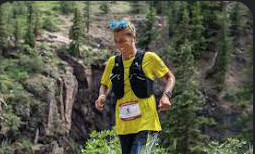
Courtney has a lot to say: “Comfort is key! I prefer [shorts with] long inseams because I am most comfortable in them. We should all wear the clothes that make us feel our best when we're out trying hard things.”
On the type of course: "I love any type of route, really, but loops definitely feel like big adventures. Not knowing what’s around each corner or what view you might be rewarded with is exciting.”
Race plan; “Early mornings feel so simple and peaceful. I love to drink my coffee and watch the sun rise while I plan out my day.
Courtney Explains: “Staying in the moment, focusing on taking the next step, and repeating a positive mantra are things I try to do during the toughest moments of any run.”
(07/27/24) Views: 130Runner’World
52nd Wharf to Wharf goes down to the wire
The 52nd edition of the Wharf to Wharf road race lived up to its billing, and then some.
Fresno’s Evert Silva surged past four runners over the finishing downhill stretch into Capitola Village and edged Aidan Reed, of Helena, Montana, at the finish line in front of hundreds of cheering fans Sunday.
Silva and Reed both completed the scenic, 6-mile trek from Santa Cruz with chip elapsed times of 27 minutes, 3 seconds on a brisk morning under an overcast sky, perfect for running.
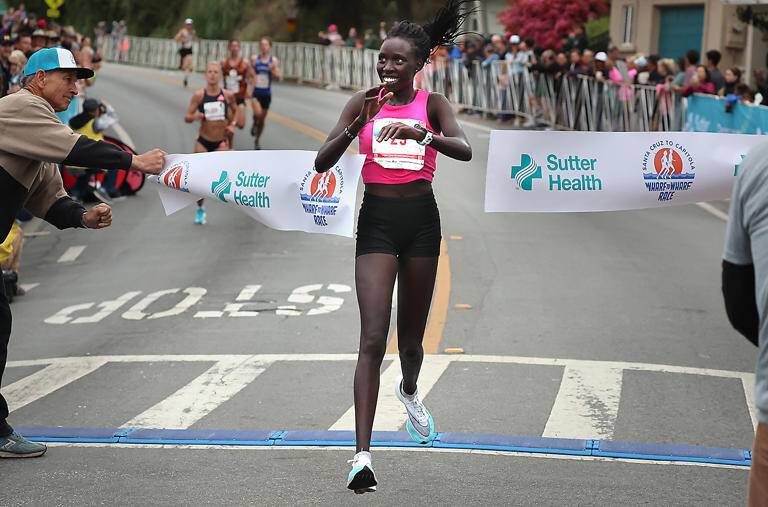
It was Silva’s first time competing in the race. The Oklahoma City University junior student-athlete said he was hoping to perform well in several races this summer to earn some money to help pay for bills. He earned a great payday.
The top male and female finishers each earned $4,000. Silva was also awarded an extra $1,000 for finishing as the top American runner.
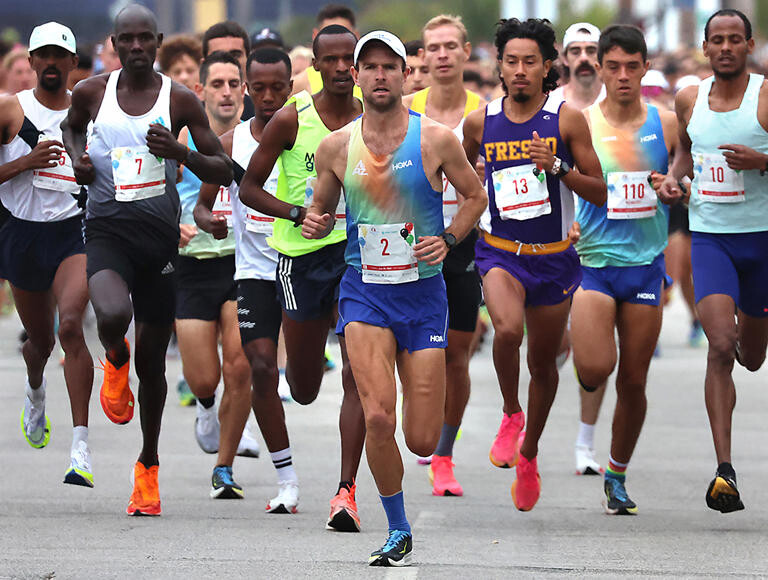
“I’ve heard a lot about it,” Silva said. “I know it’s a competitive race, so I wanted to show up when I knew I was in good shape to compete with all the top-level athletes who come here.”
Evert Silva raises his arms in triumph as he is cheered by the crowd at the Capitola finish line after winning the 2024 Wharf to Wharf on Sunday. (Shmuel Thaler - Santa Cruz Sentinel)
Evert Silva, 24, of Fresno, takes a final look back over his shoulder on Sunday before crossing the Capitola finish line to win the men’s title at the 2024 Wharf to Wharf race. Second-place finisher Aidan Reed, second from right, and third-place finisher Matt Baxter finished shortly after Silva. (Shmuel Thaler - Santa Cruz Sentinel)
Women's winner Everlyn Kemboi smiles as she breaks the tape at the Wharf to Wharf on Sunday. (Shmuel Thaler - Santa Cruz Sentinel)
Oliver Chang, of Santa Cruz, exults as he crosses the Capitola finish line with a time of 29:16 to win the local men's title at the Wharf to Wharf race. (Shmuel Thaler - Santa Cruz Sentinel)
Runners, including men’s winner Evert Silva, wearing bib No. 13, get off to a fast start as the Wharf to Wharf begins Sunday morning on Beach Street in Santa Cruz. (Shmuel Thaler - Santa Cruz Sentinel)
Reid Buchanan is splashed by a cup of water that was errantly put in his way by the outstretched arm of a volunteer as the lead pack runs through the Harbor roundabout Sunday morning. (Shmuel Thaler - Santa Cruz Sentinel)Dominique Scott crosses the finish line in second place with a time of 30:33 on Sunday, four seconds behind women’s winner Everlyn Kemboi. (Shmuel Thaler - Santa Cruz Sentinel)
Matt Baxter, takes the lead on Beach Street at the start of Sunday’s Wharf to Wharf. Baxter led on-and-off for much of the race and finished in third. (Shmuel Thaler - Santa Cruz Sentinel)
Former Aptos High track standout Trent Nosky is cheered by the crowd as he finishes Sunday’s race with a time of 30:11. (Shmuel Thaler - Santa Cruz Sentinel)
Grace Barnett, of San Diego, crosses the finish line with a time of 31:21, just edging out Alice Wright, at left, for fifth place. (Shmuel Thaler - Santa Cruz Sentinel)
Show Caption
1 of 10
Evert Silva raises his arms in triumph as he is cheered by the crowd at the Capitola finish line after winning the 2024 Wharf to Wharf on Sunday. (Shmuel Thaler - Santa Cruz Sentinel)
Expand
Reed earned $3,000 for second place. Matt Baxter, a two-time national champion from New Zealand, took third in 27:05 and earned $2,000. Ali Abdilmana of Ethiopia took fourth in 27:16 and earned $1,000, and Arturs Medveds of Latvia rounded out the top five in 27:28.
Race organizers expected a competitive race, given the times previously run by athletes in the elite field, and it was a thriller to the final step.
While plenty of the participants in the 16,000-runner field trained for the heralded event — arguably the biggest sporting event held in Santa Cruz County each year — few trained with ferocity of Silva.
Silva usually tries to train in the morning to avoid the suffocating, triple-digit temperatures that are commonplace in the Central Valley during the summer, but he added plenty of afternoon sessions, too. His showing along the coast, with views of picturesque Monterey Bay, was quite literally a breeze.
“I try to run in the morning,” he said. “But every afternoon run it’s 110 (degrees), so I said, ‘A lot of people aren’t training in that, and if I could just do it every week something good is going to come out of it.’ I guess it was being able to run fast in 60-degree weather in Santa Cruz.”
The lead pack featured eight runners for much of the first five miles. The runners traded the lead throughout that stretch. Baxter led at the mile marker, and Kenya’s Shadrack Keter, the third-place finisher at the 2023 Wharf to Wharf, crossed the second mile balloon archway in front.
Kenya’s Peter Mwaniki Njeru moved from second into the lead at the third archway, but he dropped back to fourth place as the lead pack thinned to five runners. Reed jumped in front and led at the fourth- and fifth-mile markers.
All the while, Silva stayed in the hunt, patient and ready to pounce.
“The downhill was extremely steep,” said Silva, of the finishing stretch. “And I’m a sub-4 miler, so I knew I can sprint with anybody. Those guys ahead of me, to my knowledge, they’re not sub-4 milers, so I knew I had some speed. Thankfully, I was able to hold it off.”
It was his second win in as many days. He took first at the Miguel Reyes Elite 5K in Fresno on Saturday.
American Everlyn Kemboi, a Kenyan native who won the 2023 NCAA title in the 10K, earned her second win as a professional. She topped the women’s field in 30:29. She passed Dominique Scott, who has citizenship in both South Africa and the U.S., with 600 meters to go.
“I’m so happy to be here,” Kemboi said. “I love racing in California. I came here last year. I was fifth. That was my first professional race.”
She wanted to come back and improve her showing. Kemboi credited her training for an improved effort. She said she’s running with peace of mind, so much so that she was surprised how quickly the race ended.
“I trust my finish, but today I was feeling great,” Kemboi said. “I was like, ‘Oh, we’re almost at the end. I only have six to seven meters to go. What?!?! I’m feeling good.’ ”
Scott, who was teammates with Aptos native and 2024 Olympian Nikki Hiltz at University of Arkansas, took second in 30:33.
If Scott returns next. year, she’ll have some useful course knowledge to rely upon.
“The girl that won, she made a little surge past me,” Scott said. “I didn’t realize how aggressive the downhill was going to be and that once she was two steps in front of me, I wouldn’t be able to catch her because it’s that aggressive of a downhill. That was definitely a mistake on my behalf. I would’ve loved the win, but I’m also happy with my race today.”
Scott is enjoying the process of training to compete in the next Chicago Marathon.
“It’s a hard course, but a fun course,” said Scott, of the Wharf to Wharf. “It’s cool how the locals come out to support. It was a great day. … They’re aren’t many races this time of year where you can get a perfect morning race. It’s usually pretty hot for all road races during the summer. I really enjoyed the weather.”
Kayley Delay of Jacksonville Beach, Florida, finished in 30:52 to hold off Ethiopia’s Atsede Baysa (30:55) for third place. Grace Barnett of Pawleys Island, South Carolina, took fifth in 31:21.
Santa Cruz’s Oliver Chang (29:16) and Watsonville’s Daniela Salazar (34:38) earned top local honors.
Chang, who grew up in South Pasadena and competed for Pomona College, moved to the area two years ago and used his extra year of eligibility competing for NCAA Division III UC Santa Cruz’s cross country and track programs.
Sunday was Chang’s first competitive race since competing in the San Francisco Half Marathon a year ago to the day. He began training in earnest 10 weeks ago.
“I’m ecstatic,” he said. “I couldn’t be happier with how the day went.”
Sunnyvale’s Daniel Mendez, who purchased a home in Brentwood roughly two weeks ago, competed in the race for the first time and came away with a handsome payday. His bib number, 9948, was drawn in the Golden bib contest, which earned him $5,000. He had no idea of the significance of being awarded a golden bib at the outset of the race, but several runners informed him that he should stick around and attend the awards ceremony.
“This is insane,” he said.
(07/29/24) Views: 130Santa Cruz Sentinel


